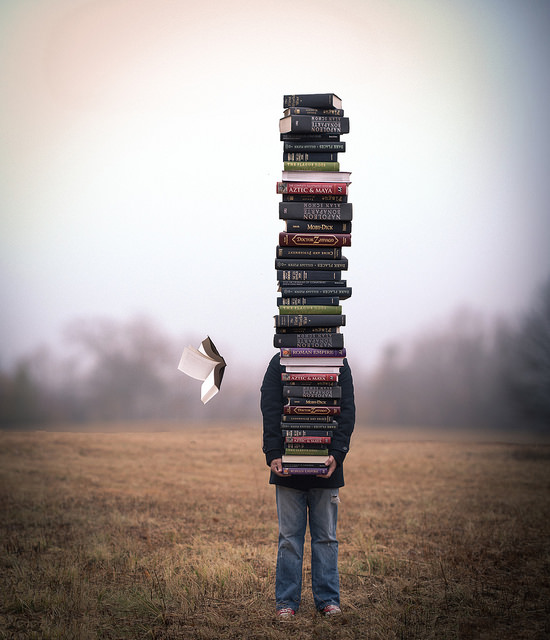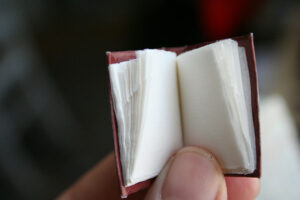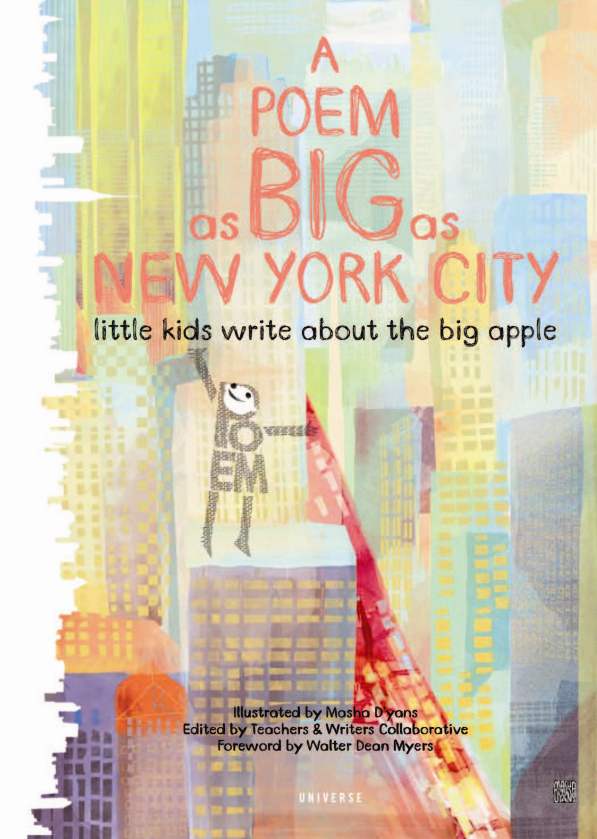How do we teach students of poetry to avoid cliché, to use language that allows us (and them) to see things anew? In these four lessons, the poet Michelle Chan Brown offers an array of strategies for using surprise to subvert expectations and create a sense of wonder. Using the work of poets (and one songwriter), Brown walks us through the ways poets use surprise in both form and content, and presents writing exercises to help students incorporate surprise into their own work.
Michelle Chan Brown
Grade(s) Taught: 11th and 12th
Genre(s) Taught: Poetry
Download: Making It New: Using Surprise To Make Poetry Come Alive
The work of poetry is to render things new. When we use language in ways that surprise we do just that. But what, exactly, is surprise and how do we teach it? Any attempt to define it is a suspect endeavor because spontaneity and unpredictability are an intrinsic part of what makes something “surprising.”
Take a birthday party planned in stealth, or a physical gesture intended to rattle: the tickle-attack, for example. Once the recipient of the planned surprise has any indication of what is about to happen, they begin to strategize how they will receive the (now non-) surprise. They may still experience pleasure or distress, but of a different variety.
Although many claim to hate surprises, I would argue that in life, and especially in art, we crave surprise. Let me clarify that I don’t mean shock, which is surprise’s sweaty, bombastic cousin. The elegant relative of surprise is wonder. And why make art but to enlarge our capacity for wonder?
When we demand that language surprise us we move towards more clarity and fewer clichés, away from what George Orwell, in his famous essay “Politics and the English Language,” calls “the slovenliness of our language [that] makes it easier for us to have foolish thoughts.”
Although many claim to hate surprises, I would argue that in life, and especially in art, we crave surprise. Let me clarify that I don’t mean shock, which is surprise’s sweaty, bombastic cousin. The elegant relative of surprise is wonder. And why make art but to enlarge our capacity for wonder?
Here are four lessons on surprise that I have taught to high school students. The lessons introduce categories of surprise, look at sample poems that take different routes to surprise, and suggest approaches for writing poems that aim to surprise not only the reader but the poet as well.
Following the lessons, I offer several writing assignments that challenge students to explore these strategies for creating surprise.
Lesson I
Juxtaposition, Odd Pairings, Dissonance: The Poet as Disrupter
Which of these is not like the other? It is a question even young children are asked to answer. A seemingly nonsensical combination will needle us to interrogate our assumptions about order, arrangement, and logical pairings. One way to illustrate this for your students is though a discussion of cliché. Give them a series of nouns—snow, rose, knight—and ask them to provide adjectives for each one. This should be done quickly, without much time for thought. The students will see how easily we choose the familiar or trite: white snow, red rose, knight in shining armor. After this, you can talk about how to use surprise to avoid such clichés, defying expectations through use of language, music, tonal shifts, and arguments diverted. The song and poem below show how this can be done.
Prompts:
- Tori Amos’ song “The Waitress” (play and distribute lyric sheet)
- Laura Kasischke’s poem “Miss Congeniality”
The speaker’s approach in Tori Amos’ song catches us off guard: it dismantles the notion of women as cooperative, nurturing, and empathetic, and engages frankly with the taboo of female-to-female competiveness, hostility, and jealousy. Amos’ musical choices continue that surprise. First, there’s the jarring transition between dreamy, melodic verse to the chorus; then, the chorus itself (which we think of as the catchy, eager-to-please component of a song) is dissonant and cacophonic. We could even push it further and say that Amos is asking the listener what the very experience of listening should be: we may come to the girl with the piano to be soothed and lulled, but instead, she assaults us.
Amos is an elder statesman to my millennial students, so I was not surprised when they confirmed that they’d never heard of her. There was a lot of initial commentary on the aural, assaultive qualities of the song—an opportunity to discuss how cacophony and euphony can enhance turns of narrative or feeling. We also looked at the “bitch” question. Does Amos use this word merely as provocation? Is this, then, shock? Or is her tone ironic? Or is she attempting ownership of the term in a way that seems dated, and thus unsurprising, to us now. One group of my students focused on questions of profanity and art raised by this song, and interested teachers might use this as catalyst for future lesson plans. I like to challenge students to bring in poems or lyrics that use profanity in genuinely surprising ways, and to be prepared to defend their choices, using the criteria we have determined necessary for successful surprise.
Next we move on to Kasischke’s poem, examining her use of thematic and formal surprise.
Because “Miss Congeniality” is full of violent images that demand immediate attention, I’ve found the most useful discussions of this poem begin neutrally. We talk about what we notice. We list those images on the board. We hypothesize about what connects them. Many of my students want to form a whodunit narrative about Miss Congeniality. While this is important, I think one way to return to what surprises us in the poem is to emphasize Kasischke’s particular facility with metaphor, and what Tony Hoagland calls its “fantastic elasticity.” The most effective follow-up assignment I’ve had with this poem has been to ask students to write their own “Miss _______” poems, modeled on Kasischke’s technique of metaphor building.

Lesson II
Don’t Ever Stop This Train: The Poet as Conductor
In this lesson we’ll look at poems that unfold in ways so wild that they flirt with randomness. The kinesis and surprise in these poems comes from the movement from line to line. What you may lose in “sense” or cohesiveness is compensated for by the poems’ manic energy. Here, too, we see poets using surprise as a way of coping with Big Scary Themes; their skittishness appearing to be a coping strategy for dealing with the un-sayable, the difficult, the existential darkness.
Prompts:
The challenge with discussing these two poems with students is that the discussion can spiral into comments like “but this is too random” or “this doesn’t make sense.” One student of mine compared Dean Young’s poem to death metal, whereby the screaming becomes normalized. I remind them that poems are a way of making sense of the world, and that these poems’ seeming inscrutability or restlessness could be a resistance to trying to neatly explain the world’s strangeness, indifference, and darkness, or that the poem’s refusal to yield to an easy understanding may reflect a suspicion of sense-making. Or, as Young put it in an interview, “I think to tie meaning too closely to understanding misses the point.”
It can be useful to ground the discussion in Dean Young’s assertion that poems are the first lists, and to unpack the purpose of lists in general, and the choices we make—and thus Young makes—in his listing. One student pointed out that “Poem Without Forgiveness” uses examples and a dizzying range of pronouns as a way to avoid the heart and vulnerability of the poem, which comes at the end. Students tend to respond to the surface of these poems, the Creeley poem in particular, and we’ve had discussions about his use of lowercase, expunging of vowels, and his reference, without explanation, to someone named John.

Lesson III
Shifts & Turns: The Poet as Trickster
Here, we’ll look at poems that set up expectations for the reader—about theme, about the speaker, about the subject—and then explode them. How are these turns achieved? We’ll also consider how the genre of love poem is recast in these two poems.
Prompts:
Shakespeare’s sonnet offers the chance to move students from their seats. Ask them to get into pairs and work together to draw “his Mistress” on the board. The “surprise”most students identify are the unflattering terms Shakespeare uses for his beloved. The challenge is to push students to see that the poem not only undermines the notion of love based on appearance, but the hyperbolic movements (in image and sentiment) of the love sonnet itself. In spite of my impatience to get students to see this, I’ve learned that silence and time is my best pedagogical tool here, as students always discover Shakespeare’s rebuttal to the Petrarchan sonnet on their own.
Dickinson’s poem offers two levels of “grey” or rich ambiguity: the slant rhyme, emphasized by the metric regularity, and the blur between the “you” and the “I.”
One way to begin is by singing the poem, and doing a rapid-roundtable on the bodily pleasures of the syllabic predictability, and how the rhyme’s inability to correspond exactly registers with the students. They often find it irritating, or “imperfect”—why can’t she just be consistent in her patterns? Why set up expectations for perfection only to confound them? Two discussion games can be helpful here: one, looking at word-pairings, and how the perfect rhymes actually hint at murkier, more unsettling thematic pairings (“I” and “Die”) or, for a more technical approach, asking students to choose one of Dickinson’s end words, generate their own slant/perfect rhymes, and discuss, in small pairs, which primary word/rhyming word pairing surprised them more.
In shifting to surprise in content as well as form, we look at the “I” and the “You.” We can storyboard the you / I relationship, stanza by stanza, and discuss how our assumptions about the dynamics—power, dependence, separation—change. It’s not a simple unraveling of a you / I, or a union of separate entities. At the end of the discussion (for a more advanced group), I might distribute an excerpt from Adrienne Rich’s “Vesuvius at Home.” At the poem’s center is the mystery of the “He”— and the surprise is, according to Rich, that the “He” is very much the “I,” a manifestation of, and tribute to, the poet’s own poetic force. It’s a brag poem hidden inside a love poem.

Lesson IV
Wonder: The Poet Surprises Herself
Here, we’ll discuss the ways in which the poet can create a speaker who finds himself surprised and changed by what has occurred inside the poem itself, and the art (artifice?) necessary to generating wonder.
Prompt:
The closing poem of this unit advances our discussion from surprise into the most important component of my poetry classes: the difference between mystery and obscurity, and the importance of ambiguity. One way to enter the poem is to distribute copies without the killer last line—generally, students classify it as lyric, safe, and within their expectations of what a nature poem “should” be. When we look at the version containing “I have wasted my life,” I ask my students to free-write on how this version changes not only the poem at hand but their ideas about what a poem’s purpose should be as the last line moves away from the observational, but rather than conclude with an epiphany or a summary, it retreats inward. Many rich discussions concern tone: is the speaker self-loathing, ironic, resigned, accepting, at peace? I’ve never taught a class that could decide, and this collective indecision is testament to what the best poetry can do: pinpoint the ambiguities inherent in the business of living.

WRITING EXERCISES
Writing Assignment
- Write an imitation of one of the poems we’ve discussed and utilize its strategies for surprise.
Other Writing Assignments Utilizing Surprise
- Begin with a statement generally accepted as true: this can be fact (“The sky is blue.”), legend (“Every dictator is an only child.”), or handed-down wisdom (“The early bird gets the worm.”) This is your first line. Now write two poems: one that validates the statement, and one that invalidates it. Finally, combine the two.
- Go to the library and choose a novel. Steal the last line; it’s yours. Now write the poem that precedes it.
- Generate a specific question. Be ambitious. (Does God exist?) Ask your friends/counselors for answers. Choose the best one. The first line is your question; the last, your answer. Now write the poem that connects them.
Revision Writing Assignments
- Take the last line of an existing poem of yours and use it as a first line.
- Print an existing poem, cut it up, rearrange it, and see what you have kept, and what you have left out of this new poem.
Michelle Chan Brown was born in London and grew up in Prague, Krakow, Moscow, Belgrade, and Kiev. Her first book, Double Agent, was winner of the 2012 Kore First Book Award, judged by Bhanu Kapil. Her second book, Motherland, with Wolves, won the Jean Feldman Poetry Prize andis forthcoming in 2015. Her work has appeared in Blackbird, Cimarron Review, The Missouri Review, Witness, and many other journals and anthologies. A Kundiman fellow and two-time Pushcart Prize nominee, Michelle is poetry editor of Drunken Boat. She lives in Almaty, Kazakhstan, where she is a Fulbright scholar, at work on non-fiction and a third poetry collection.




One response to “Make It New”
[…] help you notice where your language might be obscure or confusing. This strategy can also help you stay surprised in your own writing process. Maybe some words or phrases that you didn’t think belonged in your […]